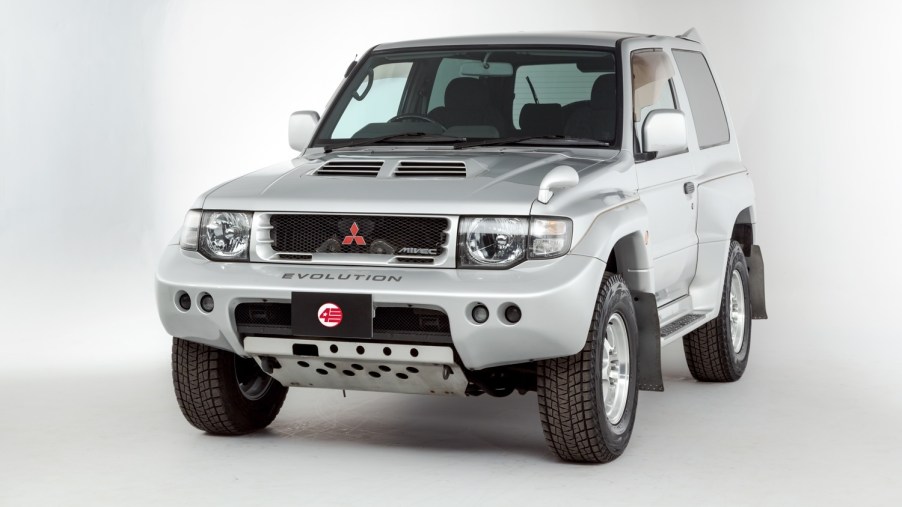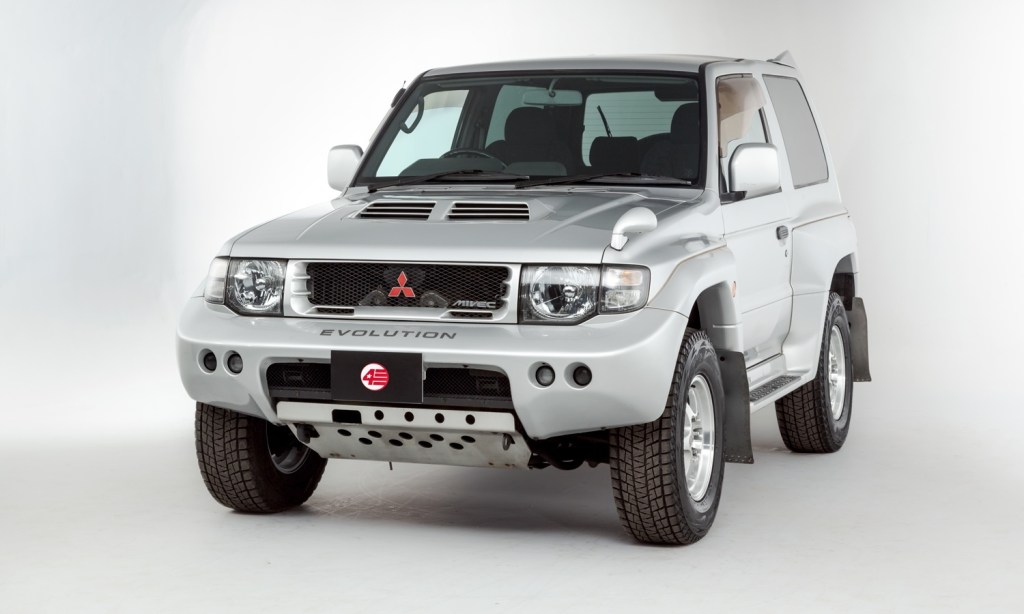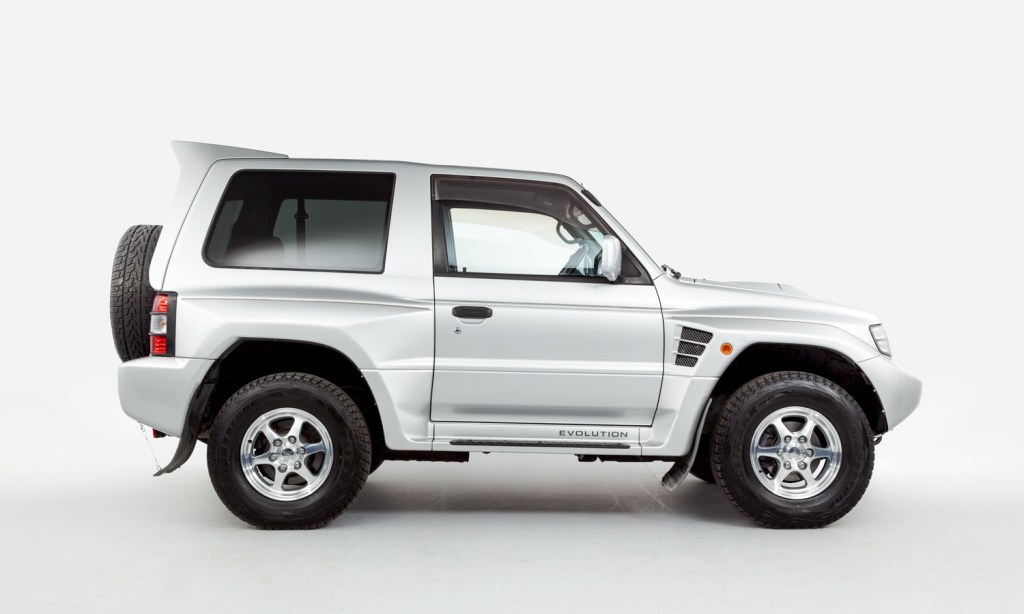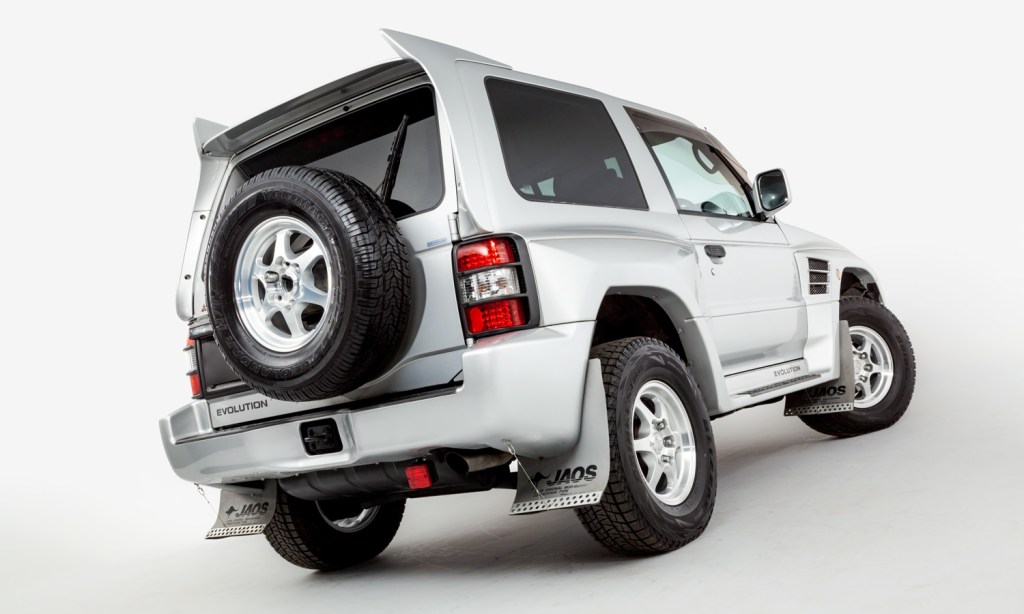
Mitsubishi Pajero Evolution: A Mitsubishi Rally SUV You Can Get Soon
90s Japanese SUVs, like the Nissan Patrol and Acura SLX, are big right now. Especially ones the US never got, like the Toyota Mega Cruiser and Suzuki Jimny. And some of the most popular ones come from Mitsubishi. Like Ford did with the Bronco R, Mitsubishi took its SUVs rally-racing, at the arduous Paris-Dakar. But while the Bronco R only shares a few parts with the production version, Mitsubishi made an SUV that hewed even closer to its racing counterpart. That was the Mitsubishi Pajero Evolution, and soon, you’ll be able to get one in the US.
Why is the Mitsubishi Pajero Evolution a special SUV?

As Jalopnik described, the Mitsubishi Pajero Evolution wasn’t just an SUV modified to go racing. It was a homologation special, a model that has to be sold to the public to qualify for production racing classes. Famous examples include the BMW E30 M3 and the winged Plymouth Superbird.

Mitsubishi wanted to take a tweaked 2-door Pajero racing, and to do so, that tweaked SUV had to be made available to the masses. Thus, the Pajero Evolution. Autotrader reports roughly 2,500 were sold in total, none in the US.
That “Evolution” is a clue as to how serious Mitsubishi was about this SUV’s design. That’s a name shared with the Lancer Evolution (aka ‘Evo’), a sadly-discontinued AWD rally sedan that competed with Subaru’s WRX. Like the sedan Evo, the Pajero Evolution could blitz on dirt and gravel.
The Mitsubishi Pajero Evolution SUV’s off-road specs and creds
Mirroring Chevrolet’s decision with the Tahoe, Mitsubishi yanked out the Pajero’s live rear axle, according to Road & Track. The Pajero Evolution was given multi-link independent long-travel suspension instead. At the front, the standard independent suspension was replaced with coil wishbones. To help the SUV survive high-speed jumps, Mitsubishi reinforced the frame and installed skid plates. To help drivers survive, the front seats were replaced with bolstered racing Recaros.
The Pajero Evolution also received front and rear limited-slip Torsen differentials. That’s in addition to the standard center differential. Not only is that the same number of differentials as the Mercedes G-Class, it gave the Pajero Evolution a four-wheel drive system similar to the Ford Raptor’s. It had 2Hi, 4Hi, and 4Lo; the latter two could be used with a locked or unlocked center differential. 4Star Classics claims drivers could switch from rear-wheel drive to 4WD on the go, at speeds up to 62 mph. It even had ABS that worked with 4WD.

The SUV’s track was widened by roughly 4”, and it was fitted with wider tires. Hence, the flares on the sides. Finally, Mitsubishi installed a 3.5-liter V6 that gave a claimed 276 hp and 256 lb-ft, linked to a modified 5-speed automatic. Except, this was the era of the Japanese ‘gentleman’s agreement’, when manufacturers agreed, on paper, to limit engines to 276 hp. Some have claimed the Pajero Evolution made closer to 300.
Did these mods work? Yes. Road & Track reports Pajeros built to this spec won both the 1997 and 1998 Paris-Dakar outright. It even beat custom-built prototype racers.
And owners still run these SUVs on rally courses to this day.
How you can get one
For a relatively rare SUV with a genuine rally pedigree, the Mitsubishi Pajero Evolution isn’t particularly expensive. 4Star Classics has one listed at the time of writing for the equivalent of $24,205. And these SUVs are allegedly daily-drivable; no doubt the automatic transmission helps in this regard.
However, it’s not their rarity that prevents US fans from obtaining them. Mitsubishi made the Pajero Evolution from 1997-1999, meaning even the earliest ones are too new to import. And because Mitsubishi modified the SUV so much, it’s not worth it to try and tune an existing Pajero/Montero to match, according to The Smoking Tire (video below—warning: possible swearing).
So, for the moment, we can’t get the Mitsubishi Pajero Evolution in the US. But in two years, it’ll be eligible for importation. The rally Rolls-Royce Cullinan won’t know what sped past it.
Follow more updates from MotorBiscuit on our Facebook page.


